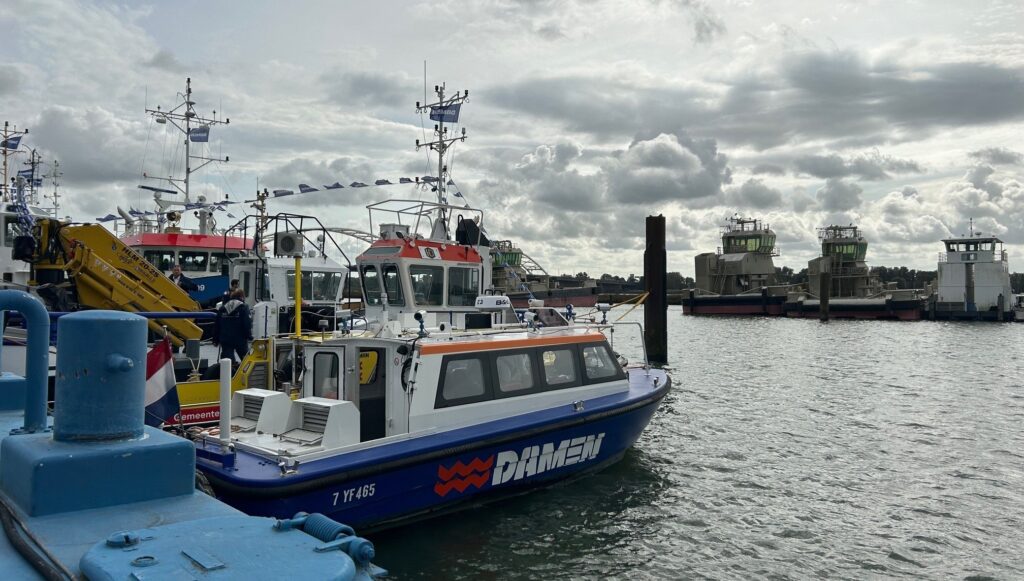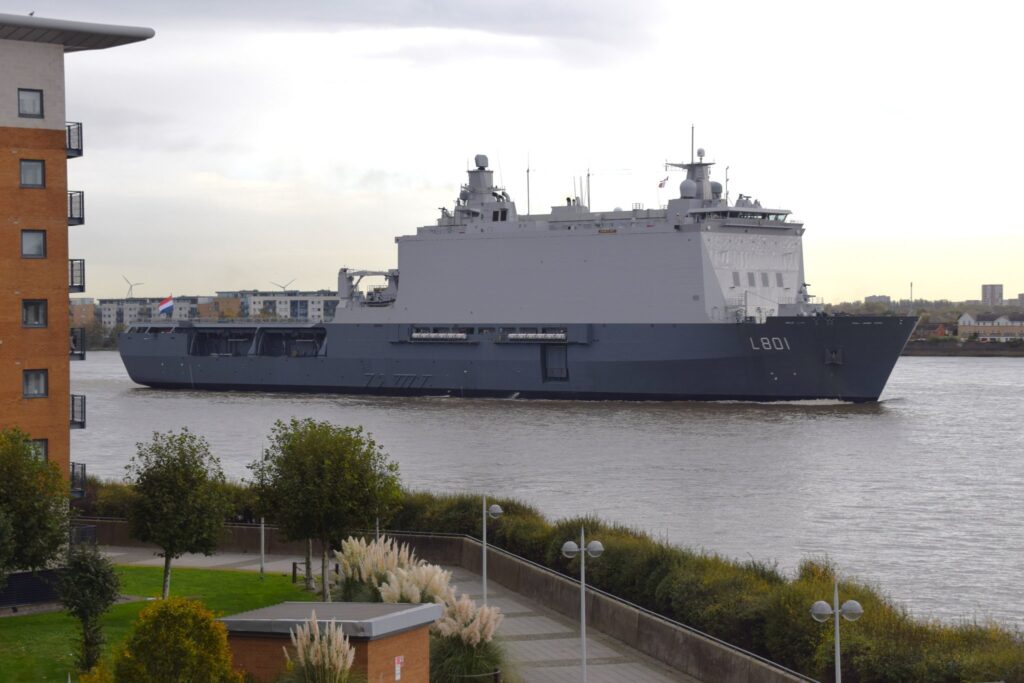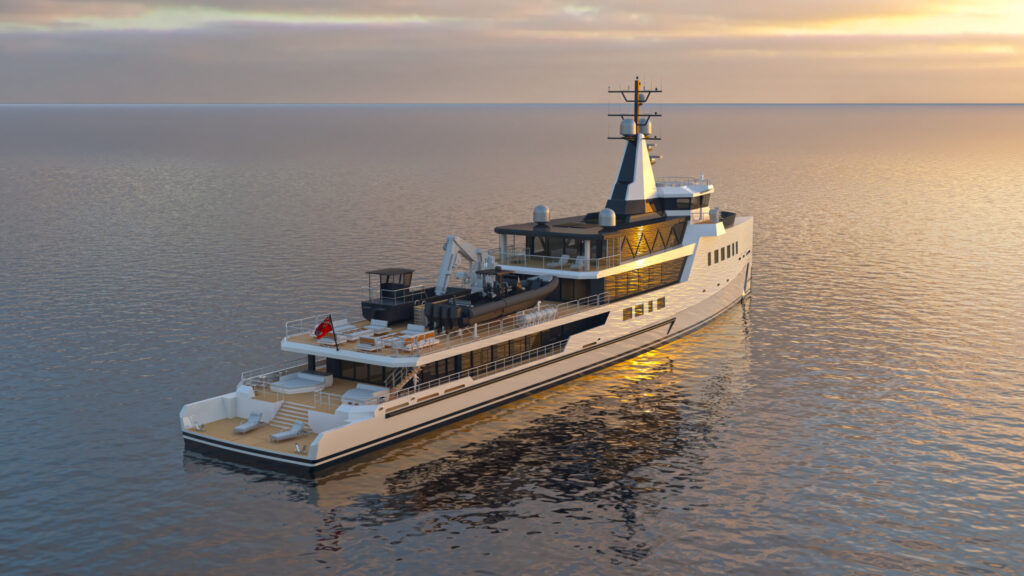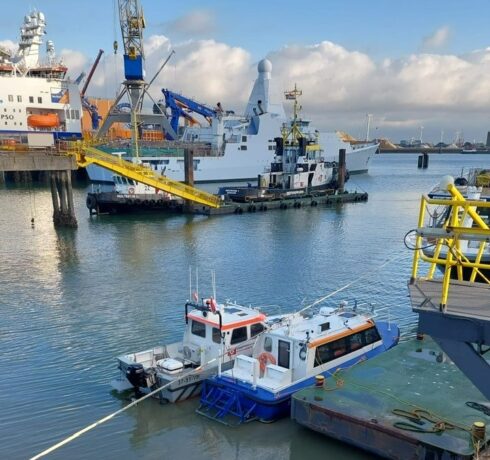It has been busy times for Project F.A.S.T. with many events attended and plans made for upcoming work. HNLMS Johan de Witt has completed its first sea trial and even visited London. And the YN478 hull project has officially been handed over to Damen Yachting.
Project F.A.S.T. cruising forward
Damen Naval’s F.A.S.T. (Fieldlab Autonomous Sailing Technology) project continues to progress steadily. Over the previous couple of months, F.A.S.T. Project Leader Jochem Nonhebel has committed a substantial amount of time to increasing the visibility of the project. This included a visit to the Damen Maritime Festival in Gorinchem in October where Jochem informed interested parties about the twin goals of the F.A.S.T. project: achieving full autonomy (“sailing from A to B without a human at the helm”) and converting a 30-year-old diesel-powered boat into a 100% zero emissions vessel (“using electricity as the only power source”).
November saw Jochem attending multiple events including visits to government ministries, autonomous sailing experts and EU funding organisations. He also presented the project’s interim results at the International Conference on Maritime Autonomous Surface Ships (ICMASS) which took place during the Europort trade fair in Rotterdam at the beginning of November. “This event was attended by researchers, autonomous ship experts and practitioners from all over the world,” says Jochem. “With presentations from academia, industry, and authorities, it was a great opportunity for everyone to share their perspectives on this fascinating subject.”
 The F.A.S.T. vessel could be seen at the Damen Maritime Festival in Gorinchem in October.
The F.A.S.T. vessel could be seen at the Damen Maritime Festival in Gorinchem in October.
The F.A.S.T. project also welcomed three new students – Wout Geuze (Avans Hogeschool), Matthijs Dirksen (HZ University of Applied Sciences), and Godert Notten (TU Delft) – to the project. “Wout has an ICT background and will be working on a data-acquisition system for onboard testing. Under the supervision of Miltiadis Kalikatzarakis, Matthijs is focusing on the fusion of the different sensors (AIS, RADAR & camera). And Godert will be focusing on an improvement of the collision avoidance algorithms that are active during sea trials.”
Looking ahead to the upcoming months, Jochem is excited to report that a number of significant upgrades will be implemented into the F.A.S.T. vessel. “This includes an infra-red camera which will enable us to take on nighttime operations, a high-tech radar for gathering more accurate radar data, and the installation of sensor fusion software which will allow us to combine multiple sensor feeds into one platform,” he notes.
Jochem’s final update for this issue of the Schelde Schakels is that he is looking forward to starting trials with the Royal Netherlands Navy next year. “This will hopefully get off the ground in January, but we will know more later this year.”
HNLMS Johan de Witt undertakes first sea trials after MLU
At the end of October, HNLMS Johan de Witt set sail for her first sea trial (SAT) after the combined Midlife Update (MLU) and third period of Appointed Maintenance (BO3). The Landing Platform Dock completed several trials in the North Sea and arrived in London on 10 November for a brief visit to England.
 HNLMS Johan de Witt sails up the Thames. Photo: Andrew Christy Photography.
HNLMS Johan de Witt sails up the Thames. Photo: Andrew Christy Photography.
According to Project Director Fer Tummers, the trials went well. “Due to the heavy autumn storm Ciarán, the Johan de Witt did decide to briefly return to Den Helder, but otherwise the trials went off without any major problems; at least as far as Damen’s scope is concerned. Meanwhile, the ship is back in Den Helder for a final maintenance period where we too have some minor remaining issues to work out, but after that the ship can re-enter the fleet.”
In March 2022, the Johan de Witt arrived in Vlissingen for the MLU/BO3. From July to November 2022, the ship was in dry dock at Damen Shiprepair Vlissingen for, among other things, conservation work on the underwater hull, superstructure, and all tanks. In early April 2023, the ship was towed to Den Helder for the last scope of the work.
YN 478: Project management passed to Damen Yachting
On 16 October, the coordination of the YN 478 hull construction project was officially handed over from Damen Naval to Damen Yachting. This means that the management of the project taking place at Vlissingen-Oost will be overseen by Damen Yachting’s own team. In practical terms however, “quite a large number of the production and quality control personnel from ‘Oost’ have been integrally transferred to Damen Yachting in order to complete the project” says Damen Naval’s Production Coordinator Stan Haag.
 Damen Yachting has now taken over the YN478 project from Damen Naval.
Damen Yachting has now taken over the YN478 project from Damen Naval.
In what is Stan’s last YN 478 Project Update for the Schelde Schakels (as he moves on to the ASWF project), he describes the status of construction as it was on 16 October. “The rudder was installed, the engine room was being prepared for the installation of the generators, and the corridor prepared for finishing the piping installation,” he says. “And on the aluminium superstructure, the new subcontractor Bayards Yacht Structures is looking to complete its structural work by the end of the year.” Other completed works included installing “quite a challenging set of stairs on the aft ship and hydraulic folding bulwarks to the side of the vessel”.
Although Stan is officially ‘off the project’, he still likes to keep up to date with its progress; he attended, for example, the start of cable pulling in mid-November. “This was another important milestone for this project.”

